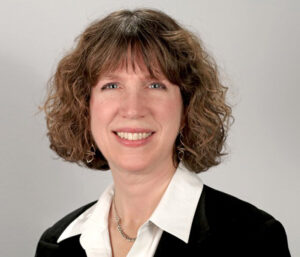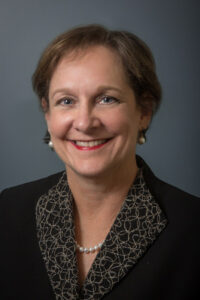Work: The Second Chapter
A growing number of older Americans continue to work
By Donna Jackel
Retirement is the long-awaited reward after years of work. While the average age of retirement in the U.S. is 63, a growing number of older Americans continue to work either by choice or necessity.
Currently, 38.4% of the American workforce is 55 or older, according to the U.S. Bureau of Labor Statistics. By 2030, 9.5% of the labor force is expected to be 65 plus; the number of workers 75 and older is projected to increase from 8.9% in 2020 to 11.7% by the end of this decade.
The transition is already underway. Many older workers are shifting gradually into retirement, transitioning from “demanding, full-time work into less stressful, part-time work,” according to The University of Michigan Health and Retirement Study (HRS), a large, national representative sampling of more than 20,000 Americans over the age of 50. The study, conducted by the Survey Research Center at the University of Michigan and funded mostly by the National Institute on Aging, is updated every two years. Information collected includes income, work, pension plans, health insurance, disability and health care costs.
Matt Taylor, chief executive officer of AP Professionals, a local placement firm, has observed that clients 55 and older tend to choose contract work over permanent positions.
“They also like variety in work tasks and workplaces,” Taylor said. “They don’t want the same level of responsibility they previously had, but still want to contribute.”

Retirees often segue into a job that allows them to use the skills they performed during their career, according to Amanda Sonnega, Ph.D., a research scientist for the Health and Retirement Study. “Most workers don’t pursue a career change after 55 — it’s not worth the investment. A small fraction chooses self employment.”
Little data has been amassed regarding what types of work older Americans perform, Sonnega said.
“It’s hard to make predictions,” she said. “Everyone is stumped as to how things are going. And the late baby boomers — those born between 1959 and 1965 — are just starting to retire.”
But some patterns are emerging. The most commons jobs for men 62 and older, according to the U.S. Bureau of Labor Statistics, are delivery workers and truck drivers, janitors and building cleaners, farmers and ranchers, post-secondary teachers and lawyers. Women in this demographic are most often employed as teachers, administrative assistants, health care aides, registered nurses and child
care workers.
While some post-retirees return to work for the mental stimulation, a segment of the population cannot afford to stop working.
“It’s most worrisome for the late baby boomers because their retirement portfolios were hit hard by the great recession and haven’t rebounded,” said Sonnega.
The money crunch is more dire for those who were unable to save for retirement and find themselves depending on Social Security as their only source of income, which was designed to supplement earned income.

“Many jobs no longer provide pensions [so] older people have to work longer,” said Ann Marie Cook, president and CEO of Lifespan of Greater Rochester, a nonprofit that provides many services for older adults and caregivers. “It’s sheer economics.”
Nearly a quarter into the 21st century, older workers are still encountering ageism and limited job options. The Age Discrimination in Employment Act forbids age discrimination against people who are 40 or older, yet in a 2022 survey of 2,945 people 50 and older conducted by the American Association of Retired Persons, 91% said age discrimination is common in the workplace.
“The current workforce shortage wouldn’t exist if society wasn’t biased against older workers,” said Cook. “People are being passed up for training, passed up for opportunities. Older workers want meaningful jobs. They don’t want reinvent themselves—they want to use the knowledge they’ve gathered and continue to contribute.”
More 80-Plussers on the Job
Census figures shows influx of octogenarians in the workforce
By Deborah Jeanne Sergeant
Young enough to be costar Harrison Ford’s granddaughter, actress Phoebe Waller-Bridge, 38, provided most of the hard-hitting physical action — along with her stunt doubles — in the summer action flick “Indiana Jones and the Dial of Destiny.”
Still, spry co-star Ford, 80 at the time of filming, held his own and didn’t lag behind with a walker or IV pole as derided in memes about the film.
The action star’s fifth installment in the franchise depicting the fedora- wearing professor–archaeologist mirrors real life.
More octogenarians are skipping retirement compared with the same- aged cohort of just a decade ago.
In June, the U.S. Census Bureau said that 18% more 80-plussers — about 650,000 — continue to work compared with 10 years before. Of those, 50% are full-time, perhaps not at their lifelong career, but working a paid job, nonetheless.
Furthermore, the bureau estimates that among those aged 75-plus, working paid jobs will increase from 8.9% in 2020 to 11.7% by 2030 as the rate among every other age group decreases. And it’s not just because the wobbly economy and rising inflation requires older adults to work (although that represents one factor).
The age of the baby boomer generation is one reason. Just as with every other life milestone, the advancement of huge boomer population will swell the number of 80-plus-aged adults in the workforce.
Current day labor shortages have also drawn many octogenarians to eschew retirement. The workplace needs more hands. Why not continue to call on those with decades of experience and a track record of reliability?
Ann E. Cunningham, executive director of Oasis Rochester, believes that the high rate of working 80-plussers is reflected locally.
“We’re seeing more people who are in need of that income,” she said. “Of course, our older adults want to remain active and vital and have skills they want to share with others. But there are lots of reasons why people need to remain in the workforce. The stock market crash hit a lot of people as far as their savings. Maybe they didn’t save as much. In a lot of ways, people want to remain active and they can do that through working.”
For many in this age group, additional training may be needed to stay relevant in the job market. Cunningham said that learning to set up email, store electronic files or use Excel spreadsheets is a commonplace need. More recently, it’s been learning to use Teams and Zoom, as the pandemic required remote meetings.
“At Oasis Rochester, we offer one-on-one tutoring, where we can help update those skills,” Cunningham said. “We have some online portals which are training sessions that people can go through on their own. There are other agencies helping with that digital inclusion and update of their skills.”
Although some older adults at Oasis want to improve their electronic communication to keep up with family members via texting, Zoom and social media, Cunningham said that many want to level up their skills to continue in the workforce, whether in their original field or working an entry-level job that simply gets them out of the house for a few hours a week. Almost every type of employment requires tech savvy of some sort. For older adults who take an entry-level job it’s typically more about maintaining a sense of productivity, staying connecting and continuing to feel purposeful in life than earning money, so entry-level pay is fine.

